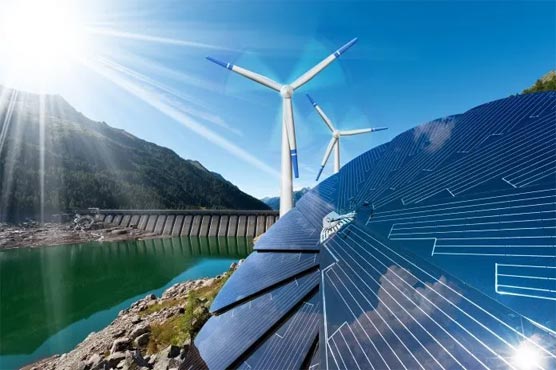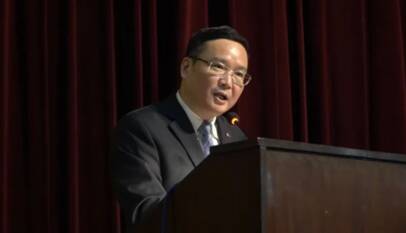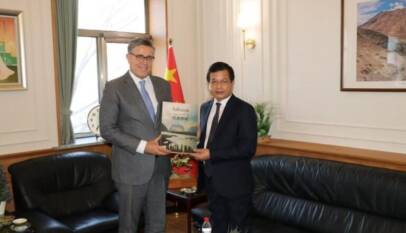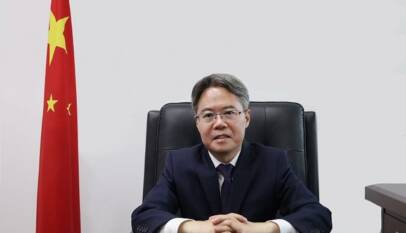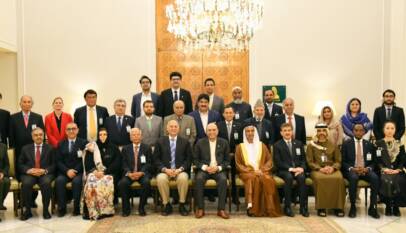Pakistan’s potential in renewable energy projects
.
ISLAMABAD: Many people ask if renewable energy is so cheap – 1-2 US cents or at most 4 US cents as opposed to 8-10 US cents for fossil energy along with pollution, why the world does not shift to renewables faster and sooner.
The global share of renewable electricity (RE) is 27% and in Pakistan it is less than 5%.
Firstly, RE has become cheaper only recently. Secondly, there is huge investment that has already been made in fossil-based power plants, which cannot possibly be written off and replaced with RE instantly.
And finally, the main issue is intermittency – solar is in the day and varies during the day, fast enough wind is not found everywhere, it blows in summer in our area and in winter in the northern sphere.
Consumers, whether residential or industrial, want electricity instantly and of quality and quantity as required. Fossil fuel does it very well as the technology has been developed over the last 100 years and more. At present, the renewables ride on the piggyback of fossil.
There are technologies which help to manage the intermittency issue to some extent.
One, hybridisation wherein mixing solar, wind and hydro provides a smoother mix; two, storage, until recently, electricity storage was not available except in mountainous hydro areas. Now battery technology is evolving fast and becoming economic; three, availability of grid of ample capacity at a suitable distance; four, certain technologies like hydrogen are under development, which will fill the technology gap that exists towards fuller utilisation of RE; five, there is a question of stranded costs – what to do with the existing facilities and how to bring about new ones; six, demand management can also influence the induction of RE.
Thus, RE penetration is going to be gradual, both here in Pakistan and elsewhere. The question is at what rate the shift is possible and economic.
Power Division and Nepra have commissioned and even approved the Indicative Generation Capacity Expansion Plan (IGCEP) and simultaneously commissioned another study called VRELS (Variable Renewable Energy Location Study), which suggests as to how much RE, where and at what cost could be inducted up to 2030.
VRELS has found that 20% of target share of VRE by 2025 and 30% of target share by 2030 would be feasible. Key questions are what are the possible regional locations, how much can be installed without grid improvement and how much capital expenditure (capex) will be required for grid improvement.
As it is, there are issues in transmission and installed capacity cannot be fully transmitted, causing load-shedding and anomalies in merit order dispatch.
Solar-wind hybrid in Balochistan
In Balochistan, there is issue of grid unavailability. Otherwise, if one examines the PV and wind resource map, there is more wind resource in Balochistan than it is in Sindh.
Chagai has the best and largest wind power potential with capacity factor of 60%, which is slightly less than twice that of Sindh. In Sindh, however, there is a grid market and relative peace.
Between Gwadar and Chagai, it is almost all windy area along with rich solar potential as well. A high-voltage, direct-current (HVDC) grid connecting Gwadar and Chagai is called for.
There was a proposal for laying a copper pipeline in Reko Diq for transporting unprocessed copper from Chagai to Gwadar for onward sea transportation. A China oil pipeline has also been proposed along the same corridor.
Thus, there is a great potential for this corridor. For practical reasons, areas near and north of Gwadar should receive priority and a suitable location should be identified that may energise desalination plants as well.
In Gwadar, an expensive coal power plant is being built for the lack of an alternative. Had this VRELS been available earlier, a solar project could have been an ideal choice, providing cheaper, cleaner and constant power.
Special tariff
It should be noted that wind is only in Sindh or Balochistan. In Khyber-Pakhtunkhwa, some wind resources are in Chitral only.
Balochistan has law and order and payment problems. People do not pay or pay low agricultural tariff under which air conditioners are also operated.
There is a case for special innovative tariff for Balochistan, if and where solar-wind hybrid is utilised. These days, solar-wind tariff is under 4 US cents.
While considering the concession for Balochistan, one should keep in view the small population and the consumption thereof, which have a very small impact on the total.
Solar-hydro/pumped storage hybrid in K-P
It appears that the potential for VRE in K-P has been under-estimated. One of the reasons probably is that hydro has been ignored. Under new Council of Common Interests (CCI) rulings, hydro is to be part of VRE.
Also, hydro generation cost (8-10 US cents) is rather high as compared to other VRE like solar and wind. However, hydro offers the cheapest possible storage technology option.
Many advances have been made in pumped hydro storage. There are floating solar power plants in dams. One such project is already being developed at Tarbela.
There are open and closed cycle storages. Two storages are built – one higher and the other lower at a height difference of 300-1,000 metres.
At the lower level, a pump and turbine house is built. In low demand periods, water is pumped from the lower reservoir to the higher reservoir through solar or other electricity.
In high demand period, electricity is generated by water flow from the higher to the lower reservoir passing through turbine.
Solar-hydro hybrid/pumped storage can be an ideal solution for K-P and even beyond. Had this option been included, K-P’s share in VRE could have been higher.
With the emergence of a new scenario wherein limitations are being put on coal, the importance of VRE will increase even further, which may force planners to increase scope of the study and the IGCEP.
Many people are sceptical of all such projections. There is surplus capacity and circular debt issue and non-payment to independent power producers (IPPs).
Smaller 50-100MW power plants appear to be more feasible. Solar and wind projects should be invested in by local investors to prevent foreign exchange outflow.
Also, indigenisation and local participation should be promoted to ensure a multiplier effect and generate employment. Some incentives for local manufacture can be introduced. There is a State Bank scheme, which may be improved upon.
It is, however, a model study showing the way to plan a sector and the constituting projects. A similar study or a combined one may also be done to include fossil plants.
The writer is former member energy of the Planning Commission and author of several books on the energy sector
Chinese Ambassador highlights significance of Third Plenary Session for China-Pakistan cooperation
The Third Plenary Session of the 20th Central Committee of the Communist Party of China ha…



